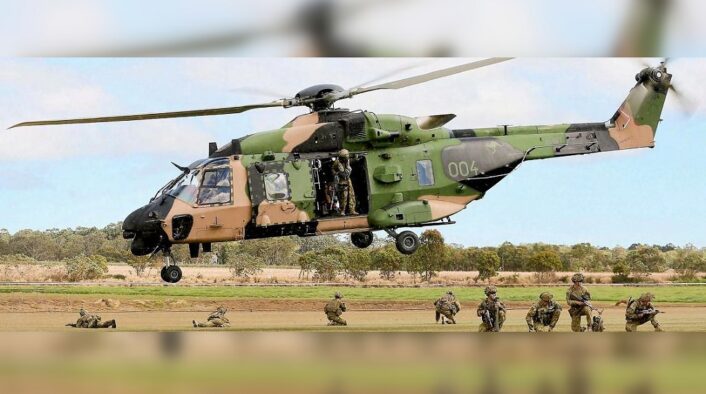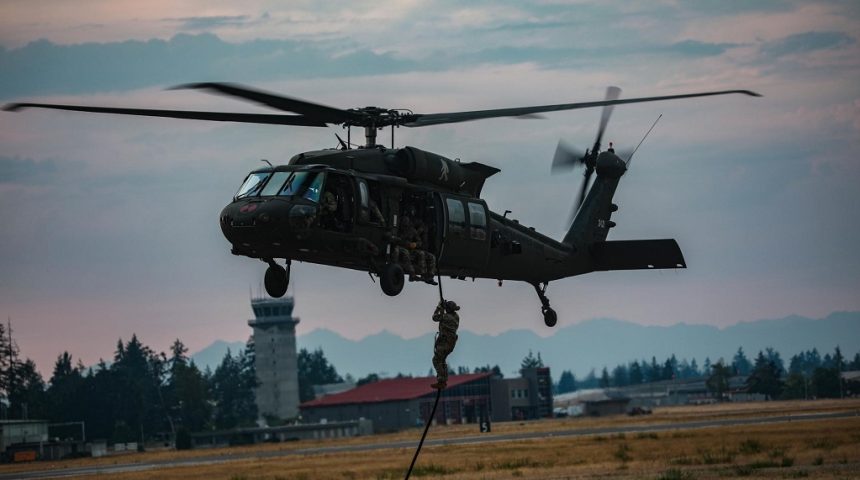The Black Hawks will replace the troubled MRH90 Taipan helicopters, which have been retired 10 years ahead of plans.
The United States Defense Security Cooperation Agency (DSCA) notified the Congress on Aug. 25, 2022, that the State Department approved the Foreign Military Sale (FMS) to Australia for 40 UH-60M Black Hawk helicopters and related equipment for an estimated cost of 1.95B USD. The UH-60Ms will replace the MRH90 Taipan helicopters that the Australian Defence Force decided to retire last year, a decade earlier than originally scheduled.
As we already reported, this situation is somewhat curious, as the Taipan was supposed to replace the S-70A-9 Black Hawks that the country acquired in the 1980s and it will now be replaced itself by other, newly built Black Hawks. The MRH90 Taipan is currently used by the Australian Army as its utility helicopter, including support to Special Operations, and provides a maritime support capability for the Royal Australian Navy.
“Taipan has been a project of concern for the last decade, it’s had nine instances where it’s been unsuitable to fly,” Defence Minister Peter Dutton said on Dec. 10, 2021. “I’m just not going to put our people in that position, we want the best equipment for them, and the Black Hawk clearly is going to provide that outcome. Getting up to 40 of them will, I think, send a very clear message to our partners and to our adversaries that the Australian Defence Force is serious about defending Australia and making sure that we can make a significant contribution when we’re called on.”
Among the equipment requested by the government of Australia to equip the helicopters there are spare T700-GE 701D engines, AN/AAR-57 Counter Missile Warning Systems, Embedded Global Position Systems with Inertial Navigation (EGI) and Country Unique Selective Availability Anti-spoofing Module, Improved Heads Up Display (IHUD), MX-10D EO/IR with Laser Designator, Ballistic Armor Protection Systems (BAPS), Internal Auxiliary Fuel Tank Systems (IAFTS), Fast Rope Insertion Extraction System (FRIES), External Rescue Hoist (ERH), Dual Patient Litter System (DPLS) Sets, External Stores Support System (ESSS).
The type of equipment requested is also in line with the needs of the 6th Aviation Regiment based at Holsworthy in Sydney, which provides air mobility for the Australian Army Special Operations Command. The unit received its first MRH90s in 2019 to replace its Black Hawks from mid-2020, however the Taipan has reportedly also proven to be unsuitable for the special forces support role in which 6Avn specialises, and the older Black Hawks had to be kept in service, delaying their retirement until at least the end of 2021. Now it will receive the new UH-60M with dedicated gear for their directed special operations tasking.

“The proposed sale will replace Australia’s current multi-role helicopter fleet with a more reliable and proven system that will allow Australia to maintain the appropriate level of readiness to conduct combined operations,” says the DSCA notice. “The UH-60M Black Hawk helicopter will improve the Australian Army’s ability to deploy combat power to share Australia’s strategic environment, deter actions against its interests, and, when required, respond with credible force. Australia will have no difficulty absorbing this equipment into its armed forces.”
It seems that also the DSCA notice is throwing a little jab at the MRH90, saying that the UH-90 is more reliable and proven. The Army and the Navy had 41 and six Taipans in service, respectively, and, despite speed, range, and troop capacity performance advantages over the Black Hawk, have been plagued with poor availability and fleet-wide groundings due to a lack of spares and configuration management issues.
The MRH90 Taipan, named after a deadly venomous snake, is an Australian-specific derivative of the NH90 TTH, developed in Europe by the multinational NHIndustries company, which comprises Airbus Helicopters, Leonardo, and GKN Fokker. NH90s have been ordered in multiple land-based and maritime versions by 14 different countries with more than 446 helicopters delivered. The Army acquired 41 MRH 90s under Project AIR 9000 Phases 2 and 4 and entered service in 2008, while six were acquired for the Navy under AIR 9000 Phase 6 and entered service in 2010. In October 2021 the United States approved a $1.3 billion deal for an additional batch of 12 MH-60R Romeo Seahawks for the Navy to replace its MRH 90s and to augment the 23 Romeos already in service.
However, the Taipan is the second European helicopter being scrapped by the Australian Defence Forces, after the AH-64E Apache Guardian was selected as the new armed reconnaissance helicopter earlier this year to replace the Tiger ARH fleet under the Land 4503 program. The deal, estimated to be worth 4-5 USD billion, will procure 29 helicopters, with 24 to be based at a single location with two operational squadrons and the other five for training at the Australian Army Aviation Training Centre.









